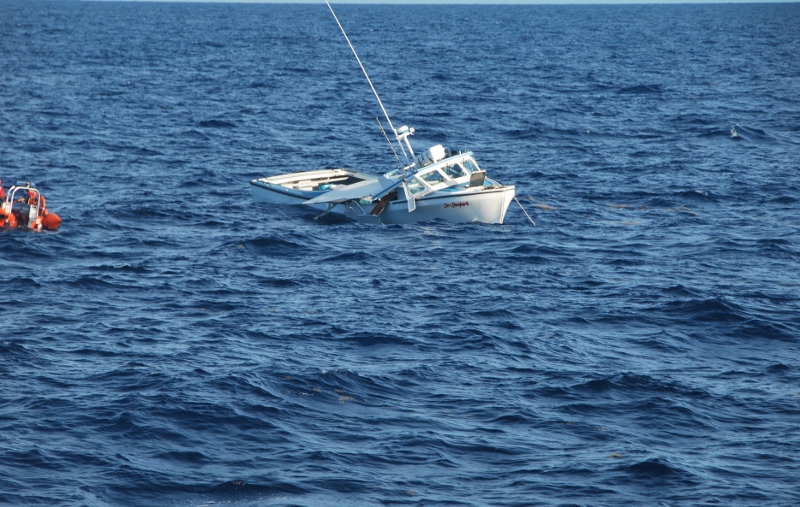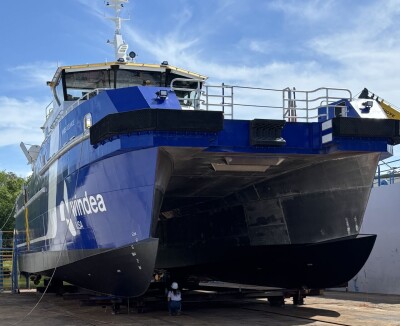An officer’s fatigue probably caused a Sept. 23, 2014 collision between the Coast Guard cutter Key Largo and the small fishing vessel Sea Shepherd near Vieques Island, when the captain and mate leaped for their lives just before the 110’ Island-class patrol boat plowed into them at almost 10 knots.
In a report the National Transportation Safety Board said its investigation concluded the cutter’s officer of the deck (OOD) had gotten only 3.5 hours of sleep in the previous 24 hours, and may have even dozed off just before the 6:38 a.m. collision.
The Key Largo was patrolling 9 miles east of Vieques when it drew near the Sea Shepherd, as fishing captain Winston Ledee of St. Thomas and crewman Kenneth Turbe were pulling lobster traps. Ledee told NTSB investigators he saw the cutter approaching in the distance, and continued to work, thinking the Coast Guard might board him for an inspection.
On board the Key Largo, the OOD told investigators he was looking for another crewman who had left the navigation bridge on a brief safety assignment and had not returned when expected. The OOD said he walked toward the door on the bridge’s rear starboard side to call out to the crewman, and on opening the door saw the Sea Shepherd about 100 to 150 feet in front of the cutter. He threw the cutter’s propulsion into reverse.
When Ledee and Turbe realized the cutter was not stopping, they jumped off the stern, and the Key Largo struck the Sea Shepherd amidships on the starboard side. The OOD said he decided against turning for fear of hitting the men in the water. The captain was picked up without injury, while the mate swam back to the fishing boat to retrieve some gear and was picked up by the cutter’s small boat crew. The Sea Shepherd sank two hours later.
NTSB investigators reported the OOD told them glare from the early morning sun was making him rely on the cutter’s radar, and that the Sea Shepherd had not shown up on the screen – both plausible factors, considering the sun angle and the boat’s fiberglass and wood construction, investigators found. Had Ledee tried to contact the cutter by radio, or sound a warning horn signal, the collision might have been averted, they noted.
But the investigators concluded fatigue was the primary factor.
“Regardless of whether the vessel was displaying on the radar scope or not, the OOD was not standing an effective watch,” the report says. “He also told investigators that in the 24-hour period before the collision he had slept only about 3.5 hours (he took a 1-hour nap the previous day and slept about 2.5 hours before assuming the watch). The OOD said that, due to personal and work-related stress, his mind was preoccupied and he was having difficulty sleeping.”
Most people are impaired with less than 8 hours of sleep, the investigators wrote. In the Key Largo case, the OOD was under “considerable personal and career-related stress” and may not have reported his condition “in the belief that failing to stand watch would have negative consequences,” they wrote.
In December 2014 the Coast Guard Seventh District sent out new instructions to cutter and patrol boat captains, detailing lessons learned from the Sea Shepherd incident and calling for “prudent watchstanding principles.”





